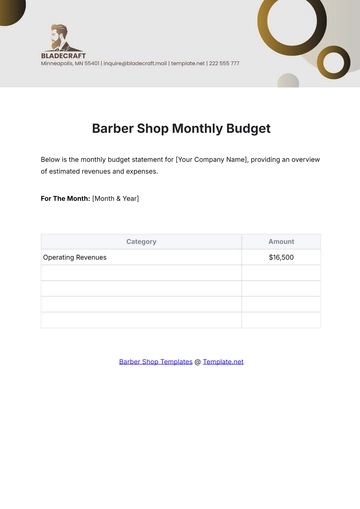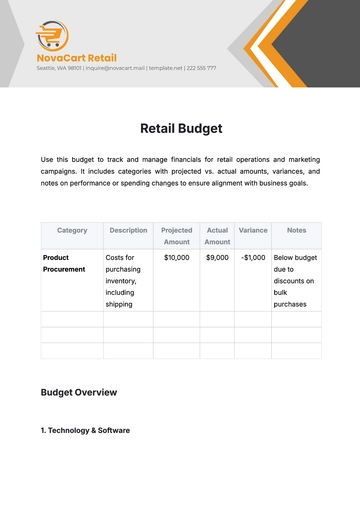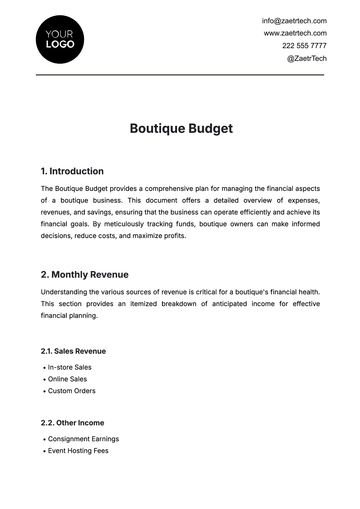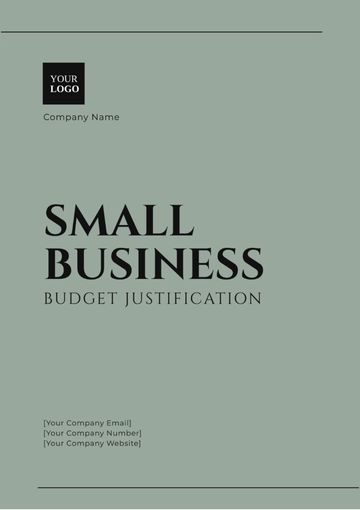Free Boutique Budget
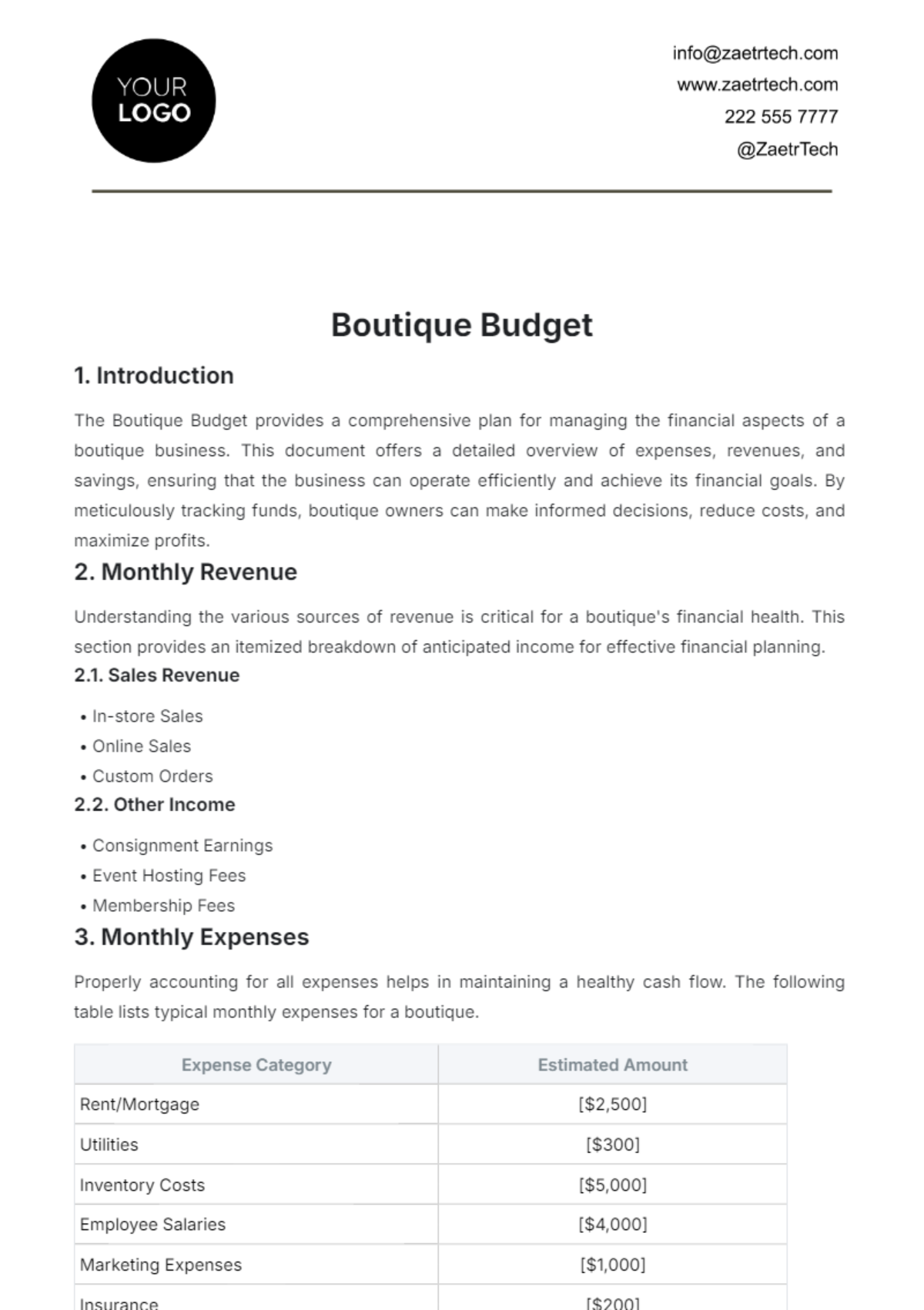
1. Introduction
The Boutique Budget provides a comprehensive plan for managing the financial aspects of a boutique business. This document offers a detailed overview of expenses, revenues, and savings, ensuring that the business can operate efficiently and achieve its financial goals. By meticulously tracking funds, boutique owners can make informed decisions, reduce costs, and maximize profits.
2. Monthly Revenue
Understanding the various sources of revenue is critical for a boutique's financial health. This section provides an itemized breakdown of anticipated income for effective financial planning.
2.1. Sales Revenue
In-store Sales
Online Sales
Custom Orders
2.2. Other Income
Consignment Earnings
Event Hosting Fees
Membership Fees
3. Monthly Expenses
Properly accounting for all expenses helps in maintaining a healthy cash flow. The following table lists typical monthly expenses for a boutique.
Expense Category | Estimated Amount |
|---|---|
Rent/Mortgage | [$2,500] |
Utilities | [$300] |
Inventory Costs | [$5,000] |
Employee Salaries | [$4,000] |
Marketing Expenses | [$1,000] |
Insurance | [$200] |
Miscellaneous | [$500] |
4. Annual Budget
An annual budget provides a long-term financial roadmap for the boutique. By projecting yearly expenses and incomes, the boutique can strategize for growth and sustainability.
4.1. Projected Annual Revenue
Revenue Category | Expected Annual Income |
|---|---|
Sales Revenue | [$120,000] |
Other Income | [$24,000] |
4.2. Projected Annual Expenses
Expense Category | Expected Annual Cost |
|---|---|
Rent/Mortgage | [$30,000] |
Utilities | [$3,600] |
Inventory Costs | [$60,000] |
Employee Salaries | [$48,000] |
Marketing Expenses | [$12,000] |
Insurance | [$2,400] |
Miscellaneous | [$6,000] |
5. Savings and Profitability
Efficient financial management not only covers expenses but also aims for savings and profitability. This section explores strategies to boost profits and ensure long-term financial stability.
5.1. Savings Strategies
Regularly review and adjust inventory orders.
Implement energy-saving measures to reduce utility costs.
Negotiate better rates with suppliers.
5.2. Profit Maximization
Focus on high-margin products.
Expand online presence and e-commerce options.
Host events to drive foot traffic and sales.
- 100% Customizable, free editor
- Access 1 Million+ Templates, photo’s & graphics
- Download or share as a template
- Click and replace photos, graphics, text, backgrounds
- Resize, crop, AI write & more
- Access advanced editor
Manage your boutique’s finances effortlessly with the Boutique Budget Template from Template.net. This editable and customizable template helps you track income, expenses, and profits with ease. Use our Ai Editor Tool to personalize it for your boutique’s specific financial needs and stay on top of your budget.
You may also like
- Budget Sheet
- Personal Budget
- Non Profit Budget
- Monthly Budget
- Project Budget
- HR Budget
- Company Budget
- Home Budget
- Weekly Budget
- College Budget
- Business Budget
- Construction Budget
- Small Business Budget
- Hotel Budget
- Annual Budget
- Home Renovation Budget
- Household Budget
- Student Budget
- Grocery Budget
- Marketing Budget
- Corporate Budget
- Startup Budget
- Manufacturing Budget
- Church Budget
- University Budget
- Annual Budget Plan
- Event Budget
- Operating Budget
- Travel Budget
- Food Budget
- IT and Software Budget
- School Budget
- Real Estate Budget
- Sales Budget
- Conference Budget
- Budget Finance
- Freelancer Budget
- Budget Advertising
